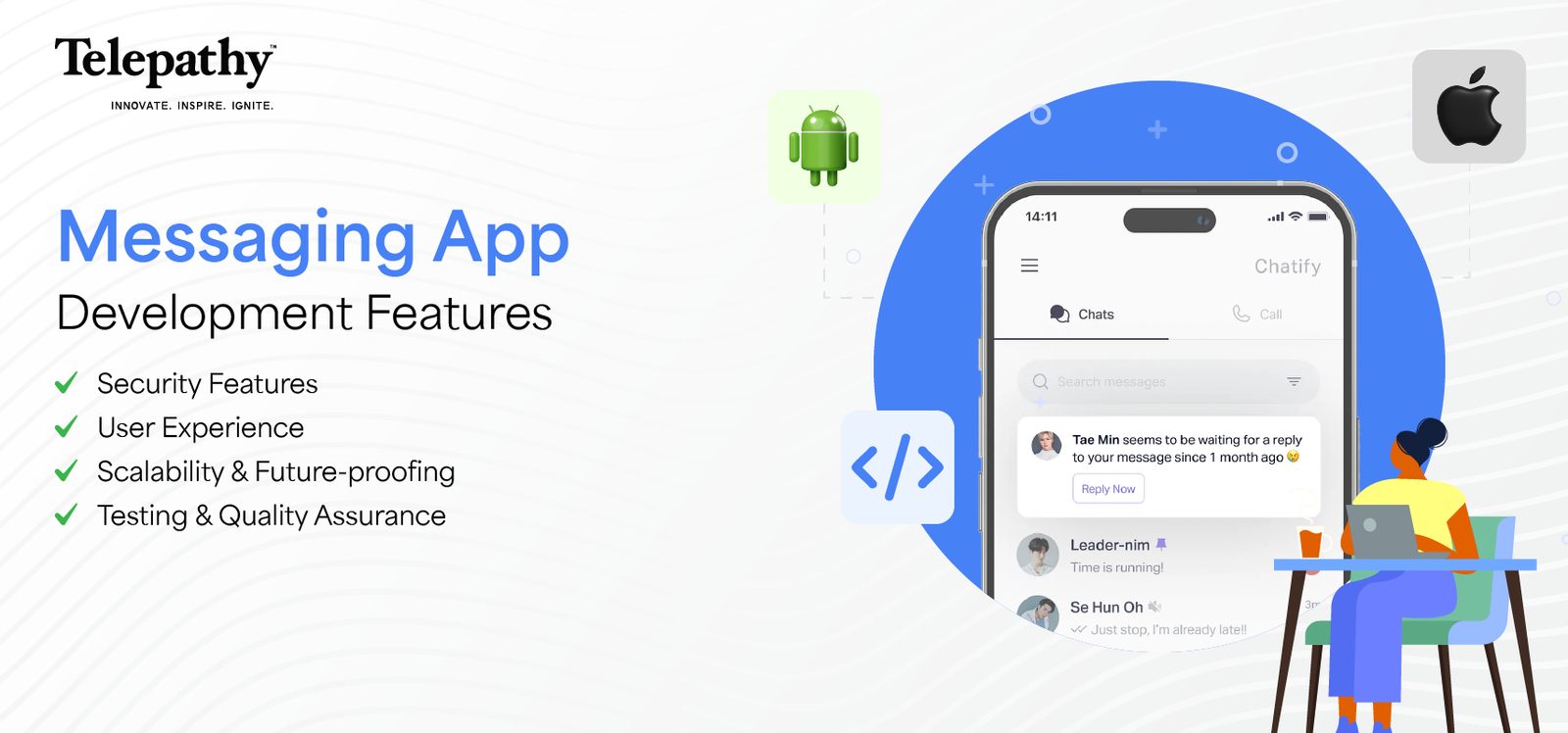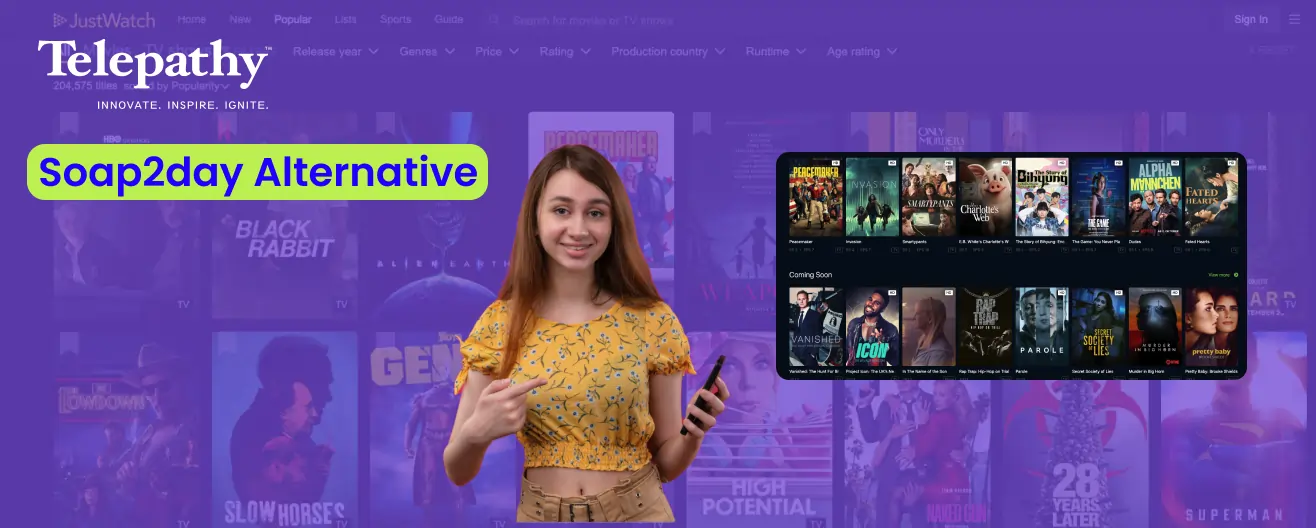
Having studied numerous popular and lesser-known messaging apps, I’ve identified key gaps in their features and functionalities. While many apps promise security and reliability, they often fall short in crucial areas, leaving users vulnerable to various threats. In this blog, I will delve into these gaps and explore essential features that must be incorporated during messaging app development to create a secure and reliable experience for users. By addressing these aspects, we can develop a robust messaging app that stands out in the competitive market. With the right messaging app development services and a tailored messaging app development solution, we can create a platform that users can trust and rely on.
Identifying the Gaps
In my research, I found that many messaging apps lack comprehensive security protocols, user privacy measures, and seamless multi-device synchronization. These shortcomings expose users to potential data breaches and unreliable messaging experiences. A successful messaging app relies on user trust in your security. This blog aims to guide developers in addressing these gaps by highlighting essential features for developing a secure and reliable messaging app. Here are a few in-app features developers can implement to maximize trust and privacy.
Why Do We Need a Feature-Rich Messaging App?
In today’s digital age, messaging apps have become an integral part of our daily communication. However, not all messaging apps are created equal. Many lack essential features that ensure security, reliability, and a seamless user experience. A feature-rich messaging app addresses these shortcomings by incorporating advanced security protocols, user-friendly designs, and robust performance capabilities. Such an app not only protects user data but also enhances communication efficiency, making it a preferred choice for users.
How Can We Get a Feature Rich Messaging App?
Developing a feature-rich messaging app requires a comprehensive approach that encompasses various aspects of app development. By leveraging messaging app development services and utilizing a tailored messaging app development solution, we can create an app that meets user expectations. This involves implementing robust security measures, optimizing performance, ensuring data privacy, and providing a seamless multi-device experience. Collaborating with experienced developers and continuously updating the app with the latest technologies can ensure that the app remains secure and reliable.
User Authentication and Security Protocols
One of the fundamental aspects of messaging app development services is ensuring robust user authentication. Implementing multi-factor authentication (MFA) and biometric verification can significantly enhance security. Additionally, incorporating OAuth and OpenID Connect protocols can provide secure access management.
- Multi-Factor Authentication (MFA): MFA adds an extra layer of security by requiring users to provide multiple forms of identification before accessing their accounts. This can include a combination of passwords, PINs, biometric data (fingerprints or facial recognition), and one-time codes sent via SMS or email.
- Biometric Verification: Utilizing biometric verification methods to build a chat app, such as fingerprint scanning or facial recognition can provide a seamless and secure user authentication process. These methods are difficult to replicate, making it harder for unauthorized users to gain access.
- OAuth and OpenID Connect: These protocols enable secure and standardized authentication and authorization processes. They allow users to log in using their existing social media accounts or other trusted platforms, reducing the need for multiple passwords and enhancing security. By integrating these protocols into your build messaging app development, you can ensure a seamless and secure user experience.
End-to-End Encryption
End-to-end encryption is a critical feature for protecting user data during transmission. By encrypting messages on the sender’s device and decrypting them only on the recipient’s device, we can ensure that no intermediary, including the app developers, can access the content. This is a vital aspect of any messaging app development solution.
- Signal Protocol: The Signal Protocol is widely regarded as one of the most secure encryption protocols. It ensures that only the intended recipients can read the messages, providing robust protection against eavesdropping and interception.
- Encryption at Rest: In addition to end-to-end encryption, it’s essential to encrypt data stored on servers. This prevents unauthorized access to user data in case of a server breach.
Data Storage and Privacy
To build a chat app that users can trust, it’s essential to implement strict data storage and privacy measures. This includes encrypting data at rest, using secure cloud storage solutions, and ensuring compliance with data protection regulations such as GDPR and CCPA.
- Secure Cloud Storage: Utilizing secure cloud storage services in messaging app development, ensures that industry-standard security measures protect user data. Cloud providers offer features such as data encryption, regular security audits and compliance with international data protection standards.
- GDPR and CCPA Compliance: Ensuring compliance with data protection regulations such as the General Data Protection Regulation (GDPR) and the California Consumer Privacy Act (CCPA) is crucial. These regulations mandate strict data privacy and security measures, giving users control over their personal information in their messaging app development.
- Data Minimization: Collecting only the necessary data and avoiding the storage of sensitive information can reduce the risk of data breaches. Implementing data minimization practices ensures that user privacy is given priority.
Secure Messaging Protocols
Implementing secure messaging protocols in the messaging app development solution such as Signal Protocol or TLS (Transport Layer Security) can further protect user data. These protocols ensure that messages are transmitted securely and prevent unauthorized access or tampering.
- Signal Protocol: As mentioned earlier, the Signal Protocol provides end-to-end encryption, ensuring that messages remain confidential and cannot be intercepted by third parties.
- Transport Layer Security (TLS): TLS is a widely used protocol that secures data transmission over the internet. It provides encryption, data integrity, and authentication, protecting messages from being tampered with during transit.
User Experience and Interface Design
A seamless user experience is crucial for the success of any messaging app development. Focusing on intuitive interface design, easy navigation, and responsive design can significantly enhance user satisfaction. Additionally, providing customizable themes and settings can cater to diverse user preferences.
- Intuitive Interface Design: An intuitive user interface (UI) ensures that users can navigate the app effortlessly. Clear icons, simple navigation menus, and well-organized layouts contribute to a positive user experience in the messaging app development solution.
- Responsive Design: Ensuring that the app functions smoothly across different devices and screen sizes is essential. Responsive design practices, such as fluid grids and flexible images, ensure that the app adapts to various devices, providing a consistent experience.
- Customizable Themes: Allowing users to personalize the app’s appearance with customizable themes and settings can enhance user engagement. Providing options for light and dark modes, different color schemes, and font sizes caters to individual preferences.
Performance and Reliability
Ensuring optimal performance and reliability of the messaging app development is vital for maintaining user trust. This involves minimizing latency, ensuring message delivery even in low connectivity scenarios, and providing robust server infrastructure to handle high traffic.
- Minimizing Latency: Implementing efficient data transmission protocols and optimizing server response times can reduce latency and improve the speed of message delivery. Techniques such as data compression and load balancing can enhance performance in messaging app development.
- Offline Messaging: Enabling offline messaging ensures that users can continue to send and receive messages even in low connectivity scenarios. The app can store messages locally and synchronize them once a stable internet connection is available. This is a key feature in messaging app development services.
- Robust Server Infrastructure: Deploying a scalable and reliable server infrastructure can handle high traffic and ensure uninterrupted service. Load balancing, server redundancy, and regular maintenance are essential for maintaining optimal performance in any messaging app development solution.
Multi-Device Synchronization
To provide a seamless experience across devices, it’s essential to implement multi-device synchronization in your messaging app development features. This feature allows users to access their messages and conversations from multiple devices without any data loss or inconsistencies.
- Real-Time Synchronization: Implementing real-time synchronization ensures that messages and conversations are updated simultaneously across all devices. This provides a consistent and seamless user experience, allowing users to switch between devices effortlessly when you build messaging app development.
- Data Consistency: Ensuring data consistency across devices is crucial for preventing message duplication or loss. Techniques such as conflict resolution algorithms and database replication can maintain data integrity and consistency in messaging app development.
Scalability and Future Proofing
As the user base grows, the app must be scalable to handle increased traffic. Implementing microservices architecture and leveraging cloud-based solutions can ensure scalability. Additionally, staying updated with the latest security trends and technologies will future-proof your messaging app development.
- Microservices Architecture: Adopting a microservices architecture allows the app to scale horizontally by distributing different functionalities across separate services. This enables independent development, deployment, and scaling of individual components, making it essential in messaging app development services.
- Cloud-Based Solutions: Leveraging cloud-based solutions provides the flexibility to scale resources up or down based on demand. Cloud providers offer scalable infrastructure, automated load balancing, and distributed data storage, ensuring high availability and reliability for messaging app development.
- Continuous Updates: Staying updated with the latest security trends and technologies is essential for future-proofing the app. Regular updates and patches can address vulnerabilities and enhance security features, ensuring that the app remains secure and reliable for messaging app development.
Testing and Quality Assurance
Thorough testing and quality assurance are crucial for identifying and fixing vulnerabilities and bugs. Conducting regular security audits, penetration testing, and user feedback analysis can ensure robust and secure messaging app development.
- Security Audits: Regular security audits can identify potential vulnerabilities and ensure compliance with security standards. Conducting audits both internally and with third-party experts can provide a comprehensive assessment of the app’s security.
- Penetration Testing: Simulating real-world attacks through penetration testing can uncover security weaknesses and help developers implement effective countermeasures. This proactive approach enhances the app’s resilience against potential threats.
- User Feedback Analysis: Collecting and analyzing user feedback can provide valuable insights into usability issues and areas for improvement. Incorporating user feedback into the development process ensures that the app meets user expectations and requirements when you build a chat app.
Conclusion
Building a Secure and Reliable Messaging App, By addressing the gaps identified in popular messaging apps and incorporating the essential messaging app development features discussed, developers can create a secure and reliable messaging app that stands out in the market. Focusing on user authentication, end-to-end encryption, data privacy, and seamless user experience is key to messaging app development.
Ensuring robust security measures, optimizing performance, and providing a user-friendly interface can enhance user trust and satisfaction. By implementing these essential features, developers can create a messaging app that meets user expectations and provides a secure and reliable communication platform.
If you want to build a secure and reliable messaging app, look no further than Telepathy. Our messaging app development services ensure that your app is equipped with all the essential features to provide a safe and seamless user experience. From user authentication and end-to-end encryption to multi-device synchronization, our solutions are designed to meet your needs in messaging app development.




